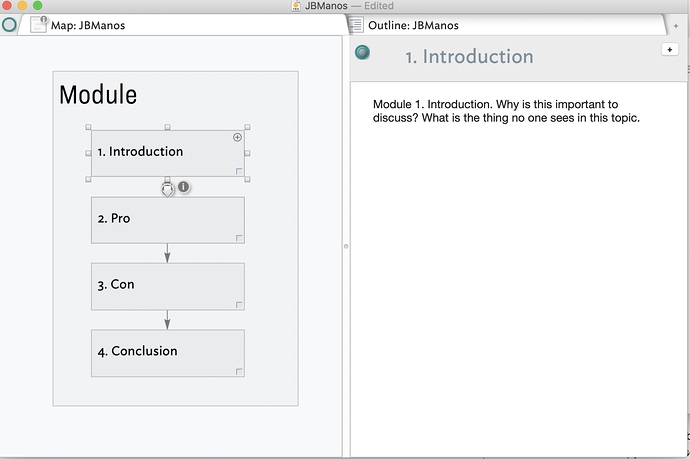I know there’s a million ways to get from zero to solution and that’s causing me grief because I still lack grasp of the toolset in tinderbox to see the variety of possibility. Instead, it’s all just a lot of options with little comprehension to me yet when grasping this sort of problem.
So I turn to you guys to see the variety and how you’d assemble tinderbox tools to make this sort of document.
I run across a variety of recommendations on building a document from components. Often, the components have modules. Each module has a number of prompts or questions that make it easier to write that idea. The modules are arranged such that once each block is written and assembled, the sequence of modules create a coherent block for a document.
Example (very poor but illustrative):
Component X:
Module 1. Introduction. Why is this important to discuss? What is the thing no one sees in this topic.
Module 2. Pro. List the sources suggesting this is favorable or that hint at this solution.
Module 3. Cons. List the discussions that say this is wrong and why.
Module 3. Conclusion-call to action. Is the solution evident? If not, what must be investigated to determine? What challenge is remaining?
So that is rudimentary example of the guided writing. I picture that a bank of components is available and a new guided writing block can be made by selecting a few components and those are kept in order.
Then, to write, each module can be presented and a place to write content and the writing prompts are there. And there is the title/topic presented for that instance of writing.
Somehow, the whole document, once the modules are filled in for the components, is assembled as a single note.
Keen observers could see that I’m thinking towards a writing factory of sorts, but also having a way to make convenient checklists and such for some types that would require content.
Overall, I picture a place where ideas are quickly captured. Later, a skeleton document made by assembling some components from the pile of options. And that skeleton document worked on at intervals until complete, then document available in an easily copied/exported format to use.
The idea that alludes me is the central writing task. Almost like filling in a web form: couple boxes to type into but all the prompts and notes for that particular document instance right there. Fill in the blanks.
How would you do that? I know there has to be a million ways but I’m sort of stymied at all the movement in this ideal factory. So I’m not looking for someone to make this for me rather, looking for inspiration or a presentation of example solutions.

